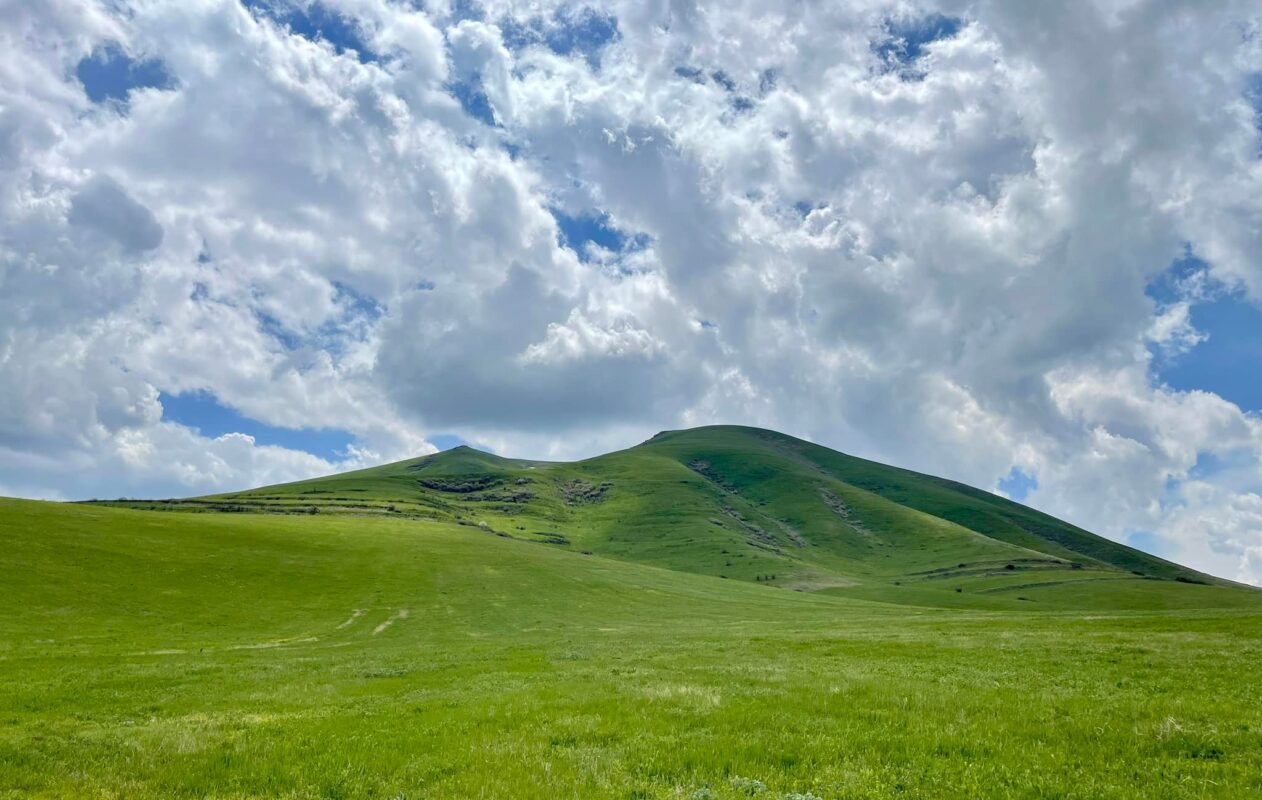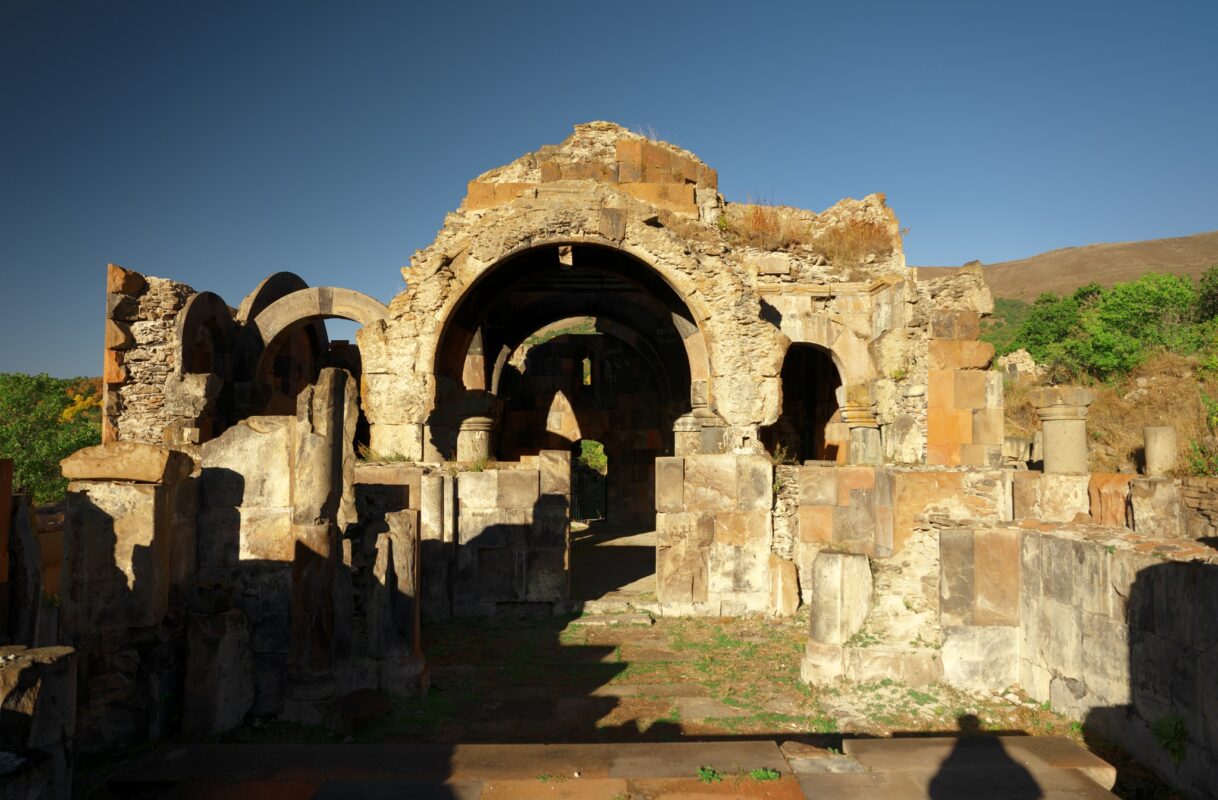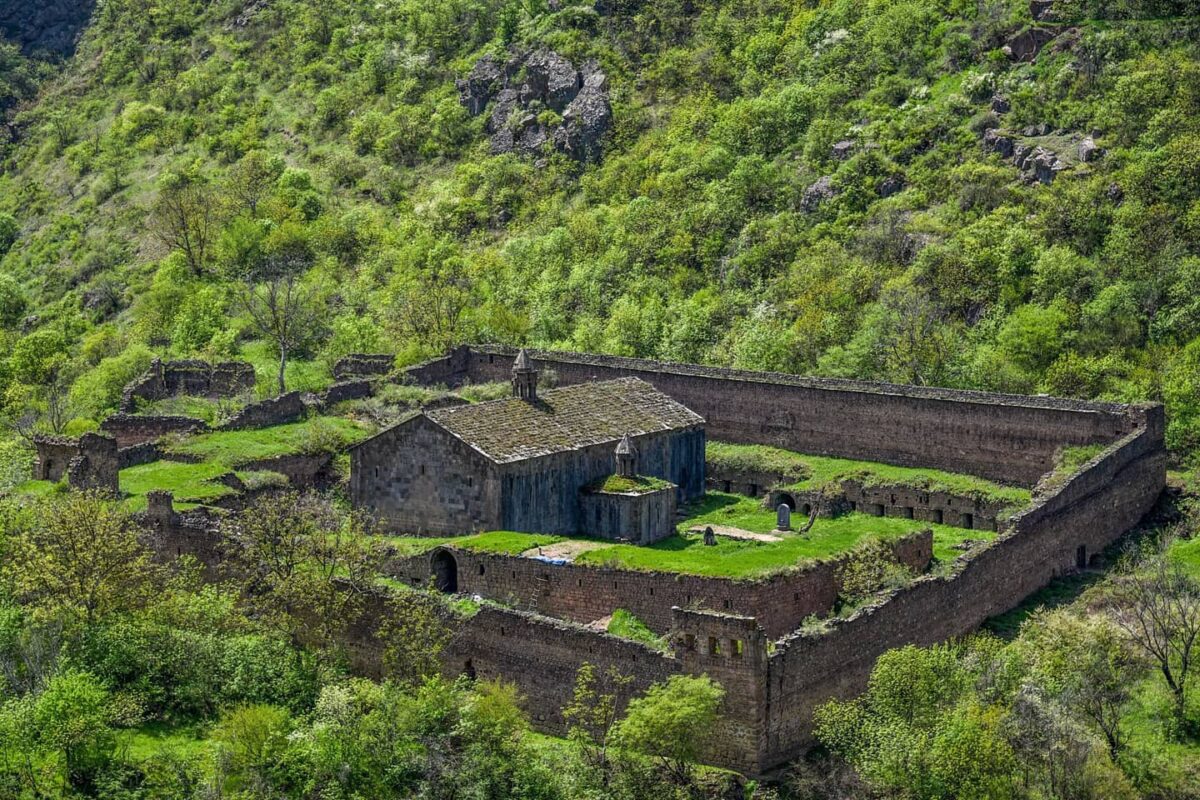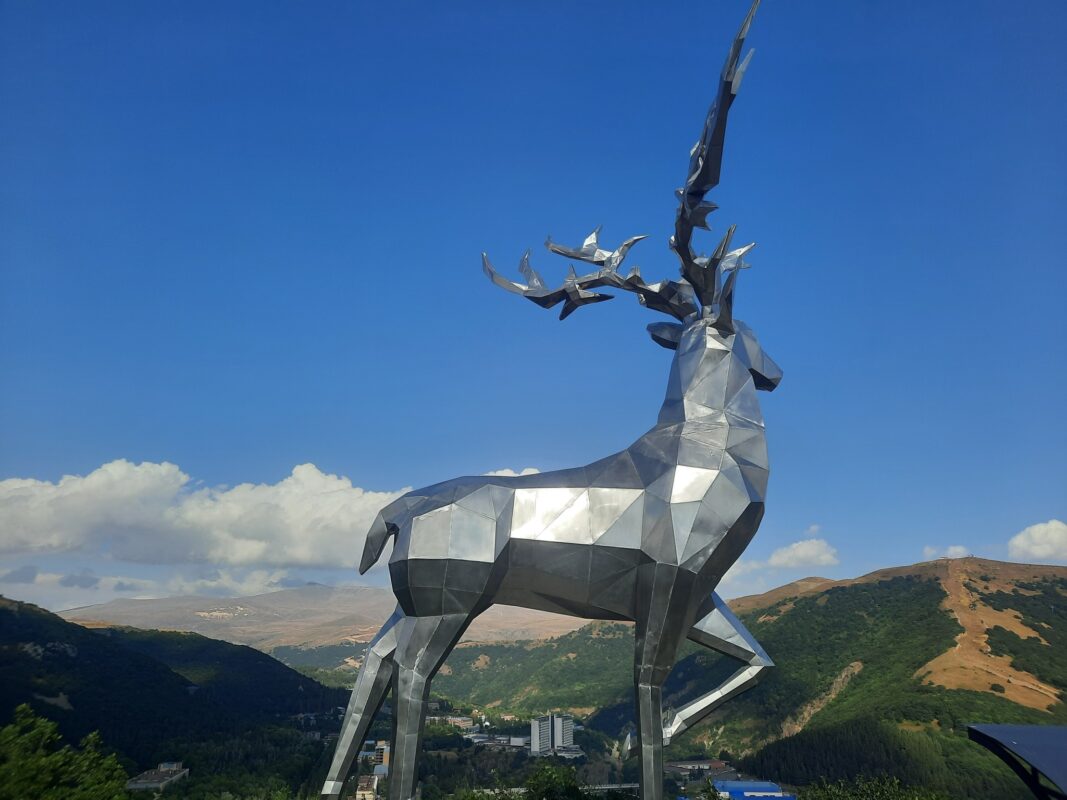Latest Listings
Related Listings
Close To You
Saghmosavank Monastery
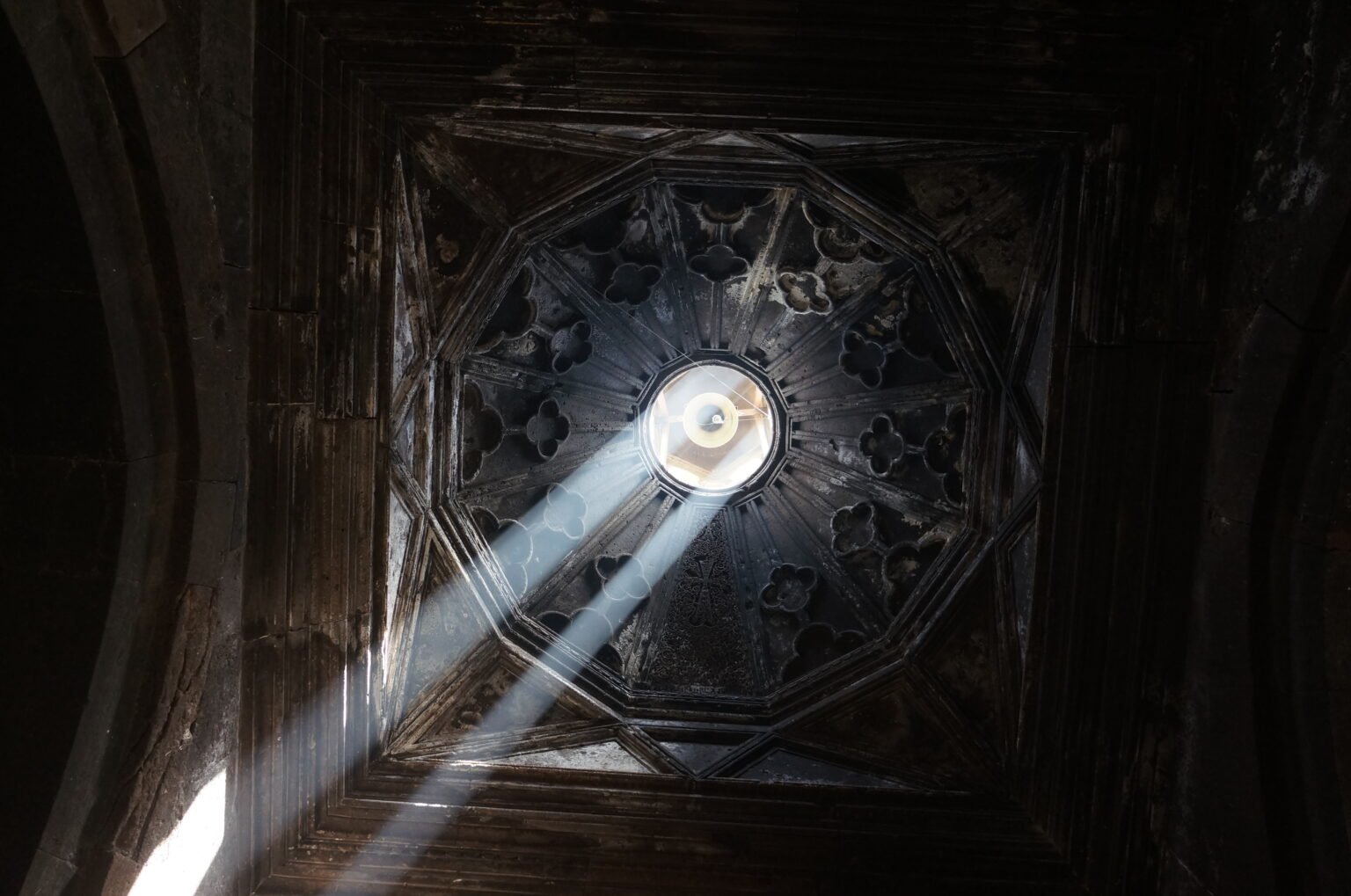
Monastery
1614 m
Historical
Easy
VISITOR INFORMATION
📍 Location - Aragatsotn Province, Saghmosavan village, perched on the eastern edge of the Kasagh Gorge
🕰️ Period - High Middle Ages (13th century, with roots in earlier centuries)
🌿 Best Time to Visit - Spring through autumn, when the canyon and surrounding landscapes are at their most vivid
🛤️ How to Get There - About 40 km northwest of Yerevan (≈1 hour drive). Follow the Ashtarak road toward Saghmosavan village. The monastery is often visited together with Hovhannavank Monastery, located on the same gorge a few kilometers away.
OVERVIEW
Saghmosavank is one of Armenia’s most striking medieval monastic complexes. Set dramatically above the Kasagh River Gorge at 1,614 meters altitude, the monastery is famed not only for its breathtaking views but also for its role as a spiritual, cultural, and intellectual hub in medieval Armenia.
ETYMOLOGY
The name Saghmosavank derives from the Armenian word saghmos (“psalm”). According to tradition, the monastery was so named because psalms were continuously recited there, echoing across the gorge as a perpetual hymn of faith.
HISTORY
The origins of Saghmosavank Monastery trace back to the early Christian centuries, when, according to tradition, Gregory the Illuminator established the first monastic community on the edge of the Kasagh Gorge. This sacred site quickly became a place of prayer and ascetic life, where hermits withdrew into the gorge’s caves to live in solitude and devotion. Although monastic activity was present from the Early Middle Ages, the monastery we see today took shape in the first half of the 13th century, under the patronage of the influential Vachutian princely family, who played a major role in the cultural and political life of Aragatsotn.
The 13th century marked the golden age of Saghmosavank. In 1215, Prince Vache A. Vachutyan completed the construction of St. Sion Church, which became the centerpiece of the monastery. Soon after, a grand vestibule (Gavit) was added, turning the complex into both a spiritual sanctuary and a place of communal gathering. It was during this period that the monastery became an intellectual stronghold. The renowned historian Vardan Areveltsi, one of medieval Armenia’s most celebrated scholars, established a school here that taught theology, philosophy, and manuscript studies. With its dedicated scriptorium, Saghmosavank rose to prominence as one of Armenia’s foremost centers of learning and manuscript production.
From the 14th to the 17th centuries, the monastery thrived as a guardian of Armenian written culture. Manuscripts of theological, historical, and literary value were painstakingly copied and studied within its walls. The construction of the Gratun (writing room) in 1255 by Kurd A. Vachutyan and his wife Khorishah was a landmark in this intellectual mission. Built in memory of their daughter Mamakhatun, the Gratun was designed as a specialized library and scriptorium, complete with niches for book storage and a dome symbolizing the heavens. During times of invasion and hardship, manuscripts were hidden in the caves of the Kasagh Gorge to safeguard them from destruction. In 1912, Reverend Khachik Dadyan discovered a manuscript list inscribed by Vache A. Vachutyan, which recorded at least 115 works once preserved at Saghmosavank. This discovery confirmed the monastery’s central role in protecting and transmitting Armenian intellectual heritage.
By the middle of the 18th century, however, Saghmosavank had entered a period of decline. Its manuscript activity ceased, and its monastic life weakened, leaving the once-thriving complex nearly abandoned. When Bishop Hovhannes Shahkhatunyants visited in 1840, he found the monastery in ruins, its glory overshadowed by centuries of neglect. A revival began in 1890, when Khrimyan Hayrik, then Catholicos of All Armenians, ordered restoration works to stabilize and partially rebuild its sacred structures.
The 20th and 21st centuries brought renewed attention to the monastery’s cultural value. Recognized as a historical monument during the Soviet period, Saghmosavank was included in state preservation programs. The most significant restoration took place between 1998 and 2000, when the Department for the Protection of Monuments undertook comprehensive works to restore the complex. Domes were reinforced, façades were repaired, and decorative elements were revived, allowing the monastery to regain much of its medieval splendor.
ARCHITECTURE
The Saghmosavank Monastery Complex is composed of several interrelated structures that together formed a vibrant religious and intellectual center. These include the Church of St. Astvatsatsin, the Gavit (vestibule), the Church of St. Sion, the Gratun (writing room or library), the residential buildings of the monastic community, and the cemetery to the north of the enclosure. Each element contributes to the overall harmony of the site while serving distinct spiritual, communal, and cultural functions.
At the heart of the complex rises the Church of St. Sion, completed in 1215 under Prince Vache A. Vachutyan. Externally rectangular and internally cruciform, it is a domed hall with two-story corner vaults that support a cylindrical drum crowned with a pointed conical dome. The facades are decorated with triangular niches that soften the austere stonework. As the principal sanctuary, St. Sion embodies both the architectural maturity and the spiritual grandeur of 13th-century Armenian ecclesiastical design.
Directly adjoining St. Sion from the west is the Gavit, a large four-column vestibule constructed by Vache A. and later repaired by his son Kurd A. This hall served as a place for gatherings, teaching, and ceremonial functions. Its central opening is surmounted by a multifaceted conical shrine with a small pillared cupola, illuminated by skylights that highlight its relief decorations. The western porch is particularly striking, framed in a tall rectangular composition and adorned with mosaics of five-pointed stars and polygons, along with crosses formed of diagonal jewel patterns.
On the south side of the main church stands the Gratun (writing room or library), erected in 1255 by Kurd A. and his wife Khorishah in memory of their daughter Mamakhatun. Designed as a square, pillarless chamber with a semi-circular eastern apse, it is crowned by a cusped dome on a polygonal drum ending in a colonnaded rotunda. Inside, stones of varied colors are arranged radially, producing a vivid ornamental effect. Wall niches were cut into the southern wall to house manuscripts, while the façades display reliefs, cruciform windows, and sculptural details - a reminder of the building’s function as both a library and scriptorium.
To the south of the complex, slightly detached from St. Sion, lies the Church of St. Astvatsatsin, a small vaulted chapel with a semicircular apse. Its entrance is emphasized by a dentil arch supported on pillars, above which a mural of Gregory the Illuminator proclaims the monastery’s sacred origins. Modest in scale, it nevertheless enriches the ensemble as a space of intimate devotion.
Surrounding the sacred buildings were the monastic dwellings and auxiliary structures, of which only ruins remain, alongside the enclosing walls that once protected the monastery on three sides. To the north lies the cemetery, a vast field of khachkars (cross-stones) and gravestones, some of which date back to the medieval period, linking the living community of monks to generations of faithful patrons and students.
Taken together, these elements illustrate the multifunctional character of Saghmosavank. It was not only a center of prayer but also a place of assembly, learning, and manuscript preservation. The careful arrangement of churches, gavit, gratun, monastic quarters, and cemetery embodies the dual mission of the monastery as both a spiritual sanctuary and an intellectual stronghold, making Saghmosavank one of the most architecturally distinguished monastic ensembles in Armenia.
TOURISM
Saghmosavank today is one of the most visited monasteries in Aragatsotn, drawing travelers with its accessibility and the dramatic beauty of its setting. Its location - less than an hour’s drive from Yerevan - makes it a convenient stop on cultural tours that explore the spiritual heritage of the region. The drive itself passes through fertile valleys and traditional villages, preparing visitors for the serene environment awaiting them on the edge of the gorge.
The monastery is especially popular among day-trippers and photographers, since its position above the Kasagh Canyon offers one of Armenia’s most striking natural viewpoints. At sunset, the cliffs glow in warm colors, making the complex a sought-after site for panoramic photography and quiet contemplation alike. For many visitors, the view alone is reason enough to come, and the monastery serves as a peaceful setting to pause and take in Armenia’s natural and cultural landscapes.
Saghmosavank is frequently included in routes that combine several nearby destinations in Aragatsotn - such as Hovhannavank, Amberd Fortress, or Oshakan - allowing travelers to experience both medieval spirituality and Armenia’s historic heartland in a single journey.
For cultural travelers, the monastery provides insight into Armenia’s enduring relationship between sacred heritage and natural landscape. Its accessibility, striking scenery, and role within regional travel itineraries make Saghmosavank a must-see destination for anyone exploring Aragatsotn Province.
LOCAL LEGENDS
According to tradition, Gregory the Illuminator founded two monasteries along the Kasagh Gorge: the lower one, called the Illuminator Monastery, and the upper one, Saghmosavank, where psalms were recited without end. Local tales also tell that during wars, monks hid sacred manuscripts and relics in the gorge’s caves, whose echoes of psalms were believed to carry blessings across the valley.
Facilities
Nearby
Set on the same Kasagh Gorge as Saghmosavank, this 13th-century complex is dedicated to St. John the Baptist. Its dramatic cliff-edge position and richly decorated gavit make it a perfect twin-visit with Saghmosavank.
Perched high on the slopes of Mount Aragats, Amberd is a 7th-century fortress known as the “Amberd Castle.” Surrounded by alpine meadows, it offers a glimpse into medieval military architecture and stunning mountain panoramas.
One of the leading astronomical centers in the region, Byurakan Observatory is famous for its role in cosmic discoveries. Visitors can tour telescopes and enjoy clear night skies far from city lights.
The resting place of Mesrop Mashtots, creator of the Armenian alphabet, Oshakan is both a spiritual site and a cultural pilgrimage. The village church, built over his tomb, is a symbol of Armenia’s literacy and identity.
A historic town filled with medieval churches, stone bridges, and traditional homes. It is also a good stop for sampling local cuisine and exploring local life in Aragatsotn.

